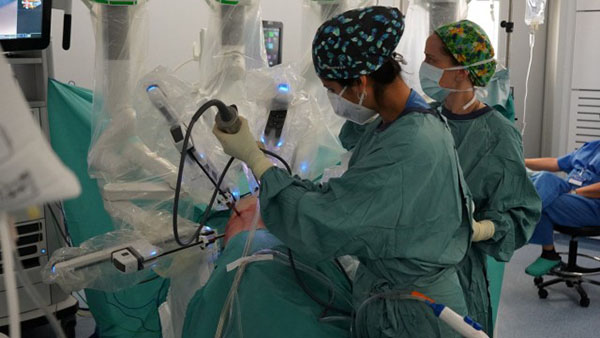BARCELONA – Vall d’Hebron University Hospital in Barcelona has carried out the world’s first fully robotic lung transplant using a minimally invasive technique that does not require cutting through bone.
Surgeons announced on Monday that they utilised a four-armed “Da Vinci” medical robot to make an eight-centimetre incision above the diaphragm to remove the damaged lung and insert a new one.
This groundbreaking procedure avoids the traditional method of separating the ribs to open up the thorax, which was the only available option until now. The doctors also noted that it is less painful for the patient as the wound heals more easily.
“We believe it is a technique that will improve patients’ quality of life, reduce the post-surgery period and reduce pain,” said Albert Jauregui, head of the Thoracic Surgery and Lung Transplants Department at Vall d’Hebron.
“This operation will not remain only in Vall d’Hebron, which is why we’re showing it to the world, because if this technique works, and we believe it does, then it has to be expanded, because the most important goal is to help more people,” Jauregui added.
The pioneering operation carried out by a multidisciplinary team of professionals from different services at the hospital was performed on Xavier, a 65-year-old man who required a lung transplant due to pulmonary fibrosis.
Xavier had been suffering from lung problems since 2005 and was diagnosed with fibrosis in 2007. Since then, his lung capacity gradually decreased, leading to the need for a transplant.
“My decision to go ahead with the operation coincided with them having a super robot ready and a super team who did the transplant, and as everything came together, the result is that today I can tell you my story,” said the patient.
Jauregui said that some patients on the waiting list for lung transplant surgery at Vall d’Hebron will be offered the new technique.
He added that he hoped that “in the future, this new approach for lung transplantations will become the standard.”
The transplant team anticipates that further repetitions of the procedure will allow for refinements, and they predict that the first double-lung transplant using this technique could
take place in just a few months.
– Nampa/Xinhua


